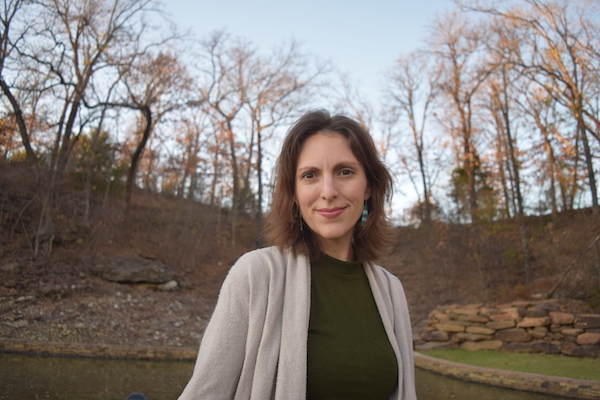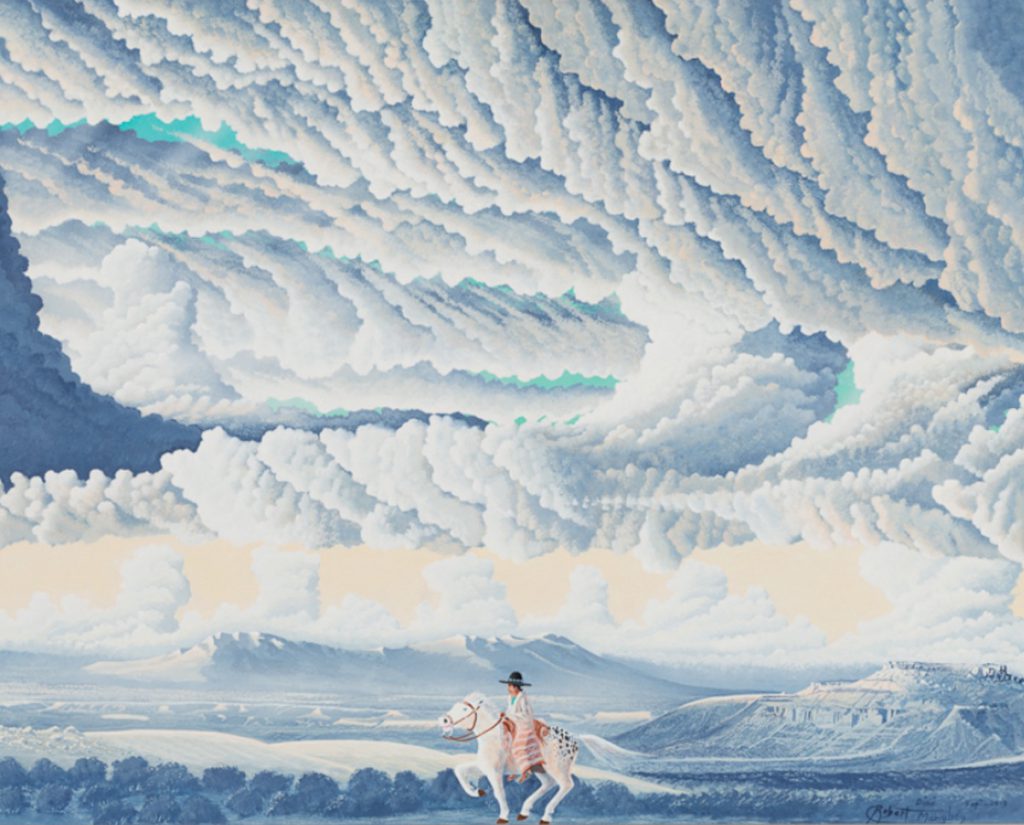
One hundred and twenty-five years ago this year, Utah became the forty-fifth state to enter the Union, ending a long, painful struggle to be so recognized. As state officials ask the public to celebrate the anniversary, the moment is ripe for historians to reflect on the statehood experience. At this commemorative juncture, how might you distill in a few spoken minutes the meaning of statehood? This deliberately open-ended question is designed to prompt broad and diverse reflections of Utah as a geographical place, political entity, and/or cultural community.
This is Home
Before there was ever “Utah” as we know it, there have been the peoples and ancestors of Utes, Goshutes, Shoshones, Paiutes, and Diné—and the places and homelands that have made them who they are. While the birth of an American state spurs celebrations and commemorations, to some it symbolizes embodied loss, even on a subconscious or silenced level. The history of the United States is inseparable from the histories of Native American and Indigenous peoples. Many peoples from diverse backgrounds, stories, and experiences have shaped what has become Utah and the United States at large, but the borders that demarcate these geopolitical boundaries were imposed over spaces that Indigenous peoples have claimed and navigated since time immemorial. To them, these spaces are their homelands, and they are integral to their identities.
Micah Daniels, a Diné scholar and educator from Montezuma Creek in the Navajo Nation, shared this message during a 2017 panel about Bears Ears:
“This is our homeland. We are not tourists here.”1
She described how many Americans still view land as separate from their own identities, which allows them the moral consciousness to use and exploit it. However, she, and her ancestors see their land as home, not as wilderness to be developed. Her words resonate with me, and as I learn about the entangled histories of the Church of Jesus Christ of Latter-day Saints, Native American and Indigenous people, and those who dwell within this state, I realize that each stretch of land, water, and mountain in Utah is a place where someone calls home.
As we reflect on the 125th anniversary of Utah statehood, let’s take this moment to commit to fully understanding the historical developments, diverse perspectives, lived experiences, and ramifications of statehood, especially on the First Nations that lived with the land and truly saw “this place” as home, sacred, and precious; and who still remain to remind all of us what it means to honor and respect all life and the land and waters that sustain us. Let’s also listen to the histories that have persevered marginalization and suppression because their understanding leads us on a path towards healing and reconciliation.
I have a couple examples that I want to introduce to express these points.
First, we need to acknowledge conquest and colonization in our histories. Oftentimes, the focus is on celebrating European-American white pioneers, or sympathizing with them because they are a part of the “victors who write history.” I have come to find that the victor-loser binary of history seriously disparages and hurts our society. Whenever there are histories of violence and injustice, all are losers. As we recognize our common humanity, rather than focusing on our differences, it will become obvious that “victor-loser” binaries distort our understanding of the past by overgeneralizing its intricacies and complications.

American ideals of equality, freedom, and justice have not always been upheld for all who have resided within its boundaries, including what became the state of Utah.
American ideals of equality, freedom, and justice have not always been upheld for all who have resided within its boundaries, including what became the state of Utah. Many Mormon white settlers challenged Native Americans, like most white European-American colonizer settlers throughout the growing empire of the United States. They staked claims on Native American spaces, often without the consent of Indigenous peoples who had developed deeply infused relationships with their homelands, and they bombarded them with strategies to eradicate Indigenous identity and ancestral ways—especially in terms of spirituality and epistemology. Numerous scholars and public intellectuals have illuminated these histories that have not been sufficiently addressed in general education and vernacular.
It is ironic that the state of Utah was named after the peoples that were the most devastated by the conquest of Mormons and their leader Brigham Young and other settlers. These newcomers eventually aligned with other white settlers as they demanded the United States to acknowledge and validate their claims over the land while they sought to “extinguish” Native American rights or “titles” to the land, and they demanded and instigated the removal of Indigenous peoples who they saw as pests or problems.2 When a Timpanogos man, Old Bishop, was murdered and his body was mutilated in “a process called ‘nepoed,’” this was a travesty against humanity. But most Utahns do not learn this history or the ties of this inhumanity to the Mormon offensive attack on the Timpanogos known as the so-called “Battle of Provo River.”3 Historian Ned Blackhawk, in Violence Over the Land, argues that “Indian wars” in Utah and the Great Basin, such as “Black Hawk’s War,” are only called as such to mask the unwarranted conquest of Native Americans—they served to justify and excuse the seizure of lands, the taking of Indian lives, and extermination.4 In his recent publication, The Whites Want Everything, Will Bagley acknowledges such misnomers including the “Walker War.”5 In early Mormon sources, the authors of documents that historians have used separated Indigenous peoples into binaries of “good” or “bad Indians,” or “hostile” or “friendly,” which draws upon this same point, that if Indians do not fit within the confines of what white European-Americans expected of them, they were justified in their suppression, or even their extermination.
Within all this, we also need to be mindful of the binaries that persist in literature of Mormons and Indians, specifically of Utahns. Some Native Americans converted and joined the Church of Jesus Christ of Latter-day Saints; and through time, some Native Americans have been identifying themselves as Utahns since statehood. Intimacies, friendships, and bonds have formed through these convergences of people, even through violence, rupture, and forms of enslavement and internment primarily against Indigenous peoples. In all this, new peoples have been born and changed through these dynamics, which includes Native American Latter-day Saints and Utahns such that “Mormon” or “Utahn” no longer refers only to white settlers but have become more complicated terms with these different peoples and generations.Black Liberation and Indigenous Sovereignty are interconnected. In social media, people such as a public intellectual, Cynthia Connell, who identifies with Black, Indigenous, and People of Color (BIPOC) in Utah, are stressing how Indigenous land and lives were taken and how Blacks were taken from their lands. An exhibit, “Indivisible: African-Native American Lives in the Americas,” claims:
“Native people and communities with African American ancestry feel equally powerful emotion and spiritual connections to the land. Like all Native peoples, they have seen their land rights threatened and usurped throughout history.”6
To heal and reconcile, we must seek to understand history and what has shaped the spaces that we navigate, dwell in, and occupy. Institutions and communities in Utah need to acknowledge that they occupy Native American land. Noochee, “the people” as Utes call themselves, and Indigenous peoples have stewarded the land where many in the populous Utah County have stood throughout generations. Indigenous peoples of eight diverse tribal nations have continued to live in what is now Utah since time immemorial, including Utes, Shoshones, Goshutes, Paiutes, and Navajos along with diverse peoples who have “carried their Indigeneity,” as Kānaka Maoli Utahn scholar Hokulani Aikau has articulated it, and their Indigenous identities to Utah in more recent generations, despite relentless efforts to terminate, annihilate, and control them.7 The Intermountain Indian Boarding School—one of the largest federal Indian boarding schools—opened in Brigham City, Utah, in 1950, as part of the waves of termination that targeted Native American peoples and identities. It is past time to respect and recognize Indigenous peoples and their ancestors who have been framed as homeless and foreigners in their own homelands.
Acknowledgment is only a preliminary step. Including Native American representatives and voices in major decision-making entities that are supported by their respective communities is another step toward rectifying what Native Americans and Indigenous peoples have experienced as their lands were violently taken. It is a step toward recognizing Indigenous lives that have been violently erased and ignored. In higher education, recent election polls, and in other reports,
“Native Americans are almost completely excluded from almost all data,”
notes Brigham Young University Native American alumna Lata Sitake in a recent petition calling for Brigham Young University to include a Native American representative on their Race, Equity, and Belonging Committee when, in 2020, a Native American was initially not invited to serve on the committee.8
These are only a few cases, and I hope that we can continue learning and taking action moving forward together, because there is so much that we can do to finally heal. Historically, Native Americans and “Indians” have been identified as “the problem” that needs some kind of solution, when the real “problem” is all of us when we stand by and do not recognize how history includes losses and gains for all of us in different ways. Although it is wonderful and meaningful to focus on gains, we cannot forget the losses and wounds that linger and call for attention, care, and healing. In all of this, we, Native American and Indigenous peoples, still exist. As Diné, I am a living testament that we are still here. We have been left out, as the COVID-19 pandemic has exposed this reality even more with the highest rates of death and effects by the virus among Native American and BIPOC populations.9 But we are resilient with some of the most effective vaccination campaigns in the world being among Native Americans, such as the Navajo Nation, and we want our seat back at the table where we belong.10
This is not just the place, this is our place. This is Home.
- Micah Daniels was one of the featured panelists of the panel, “Navajo Voices on Bears Ears,” University of Utah, Salt Lake City, Utah, October 11, 2017, https://www.youtube.com/watch?v=YA3_yOGO1Ak&feature=youtu.be.
- See Will Bagley, ed. The White Want Every Thing: Indian-Mormon Relations, 1847-1877 (Norman: The Arthur H. Clark Company, University of Oklahoma Press, 2019), 170-171.
- Bagley, 122.
- Ned Blackhawk, Violence Over the Land: Indians and Empire in the Early American West (Cambridge: Harvard University Press, 2006), 238, 244, 257; and see Bagley, 502.
- Bagley, 231.
- “Indivisible: African-Native American Lives in the Americas,” Smithsonian National Museum of the American Indian, accessed February 21, 2021, https://americanindian.si.edu/exhibitions/indivisible/land.html.
- Hokulani K. Aikau, “Indigeneity in the Diaspora: The Case of Native Hawaiians at Iosepa, Utah,” American Quarterly 62, no. 3 (September 2010): 478, 480.
- See “BYU’s Committee on Race and Inequality Needs a Native American Representative,” accessed February 21, 2021, https://www.change.org/p/c-shane-reese-byu-s-committee-on-race-and-inequality-needs-a-native-american-representative.
- “The Color of Coronavirus: COVID-19 Deaths by Race and Ethnicity in the U.S.,” APM Research Lab, December 10, 2020, accessed December 14, 2020, https://www.apmresearchlab.org/covid/deaths-by-race.
- Cindy Yurth, “Navajo leads the country in vaccine rollout: Here’s what went right,” The Navajo Times, February 11, 2021, https://navajotimes.com/reznews/navajo-leads-the-country-in-vaccine-rollout-heres-what-went-right/.